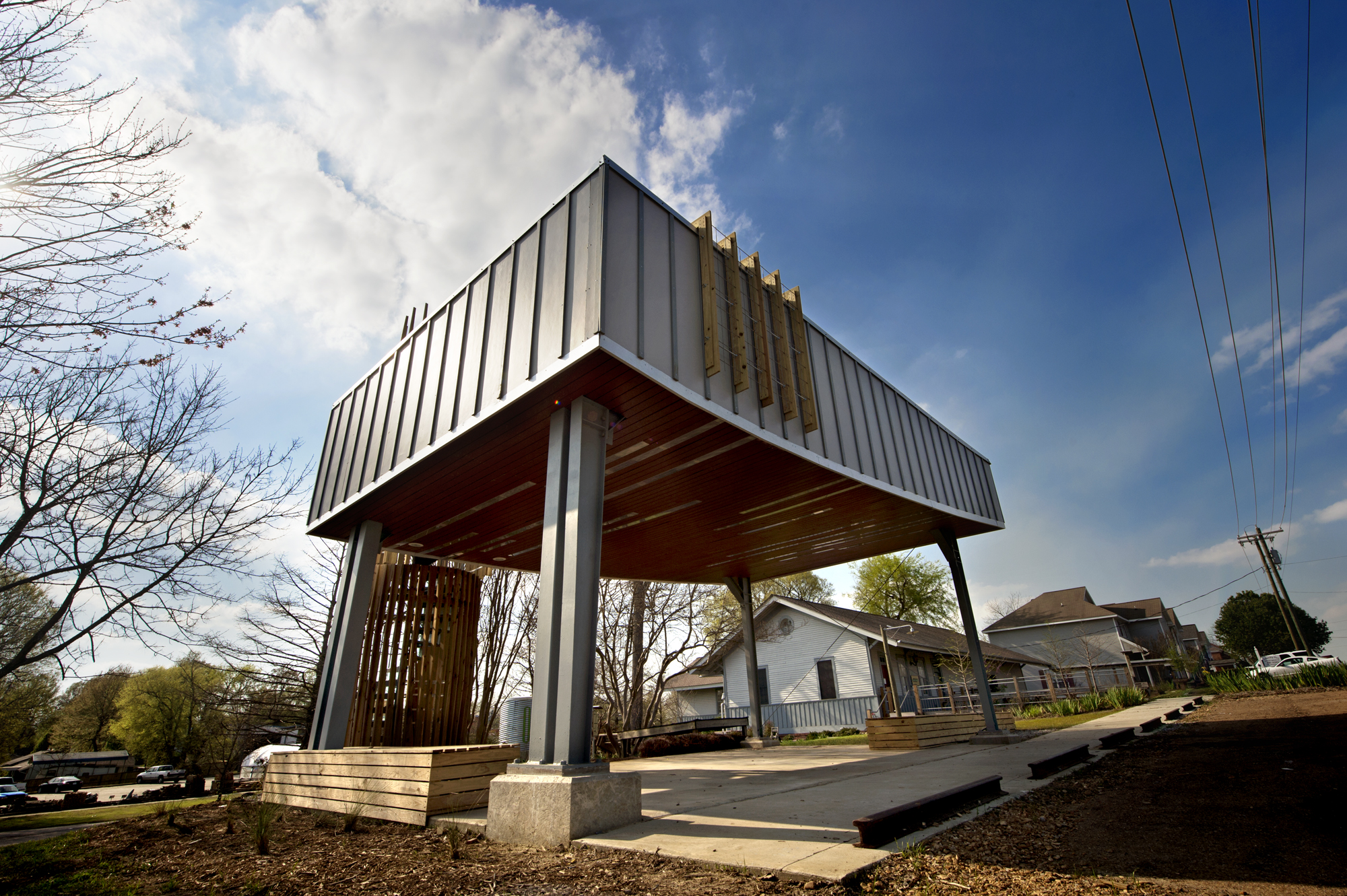Contact: Leah Barbour

Photo by: Megan Bean
STARKVILLE, Miss.--A five-year collaboration among Mississippi State, Oktibbeha County and Starkville culminates Monday [April 15] with the 5 p.m. public dedication of the green technology pavilion at Oktibbeha County Heritage Museum.
Guided by three university professionals, approximately 100 students built the Green Building Technology Demonstration Pavilion at the corner of Fellowship and Russell streets in East Starkville.
Flooding at the museum motivated initial contact in 2008 between museum leaders and MSU landscape architecture faculty members. The university's Department of Landscape Architecture, College of Architecture, Art and Design, and Extension Service, along with students majoring in architecture, art, building construction science, and landscape architecture, came together to redirect rainwater away from the building.
Cory Gallo, assistant professor of landscape architecture, said students designed and built each storm water-control mechanism.
"To our knowledge, the museum is now the only facility in the state with all these storm water management technologies at the same site," said Brian Templeton, extension associate of landscape architecture, who helped with the project.
The rain garden, installed first, complements the ground with many native plants. In the second phase, a sand filter system was added to remove common pollutants from runoff. Then, ground swales were installed to direct storm water flow, and in phase four, a 1,000-gallon cistern was put in place to hold rainwater.
The pavilion, constructed with repurposed materials and a green roof, represented the project's final phase.
"The green technologies on the site, including the green roof, attempt to mimic how rain would have left the site in a forested condition," Gallo said. "Green roofs also provide greater insulation and last two to three times longer than a traditional roof."
Not only have MSU students and teachers come together to provide a sustainable solution that improves the ecology of the local environment, they're improving quality of life, said Hans Herrmann, assistant professor of architecture.
The complex, long-term project also demonstrates to the larger world what's possible through collaboration, he said.
"Being a research-focused land-grant university, our first priority is to demonstrate the highest potential of human creation and model it, so everyone else can see how to make their lives better," Herrmann said. "The project has been fundamental to us in being able to bring about that change in an accessible and appreciable way. People can see how to use the green technology to empower them and show them they're in charge of how they want to live."
All the students who participated in the project gained what is known as "design-build" experience, an emerging trend in architecture, landscape architecture and building construction science study, Herrmann explained. Students get real-world work experience and see the results of their efforts.
"From my point of view, the most critical tool they're learning is the ability to realize a design; that it doesn't necessarily rely on an endless budget, but on the skill of the designer to creatively adapt," he said.
Students completed every task and phase of the project except operating heavy machinery, Templeton said. In addition to gaining leadership experience, they learned how to follow specifications and maintain safety in a public space, he said.
"Students often never get that hands-on experience -- coming up with a design and seeing how it comes together," Gallo said. "The project, in many ways, was a puzzle and really required a lot of working through problems quickly. Design is being influenced by what's in front of you; it makes it more real."
As Herrmann and Gallo have spent many weekends working on the project during the past five years, so have many students, even though they weren't receiving class credit for doing more work.
"It's really heartening to see students coming and doing extra work because they think it's the right thing to do, not because anyone told them to or forced them to, but because they wanted to," Herrmann said. "It's nice to see students doing that."
Learn more about the Heritage Museum at http://oktibbehaheritagemuseum.com, or visit http://www.msstate.edu to discover more about MSU.